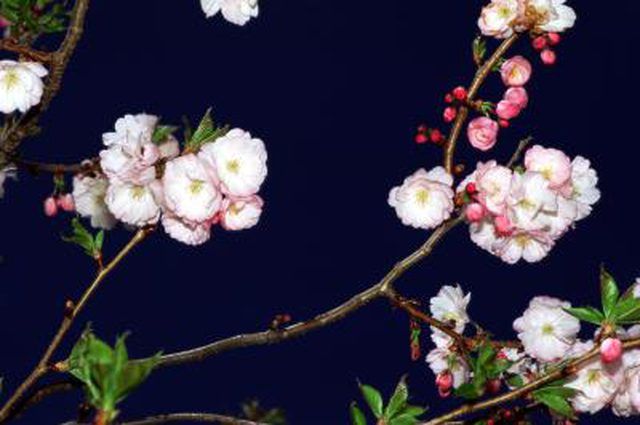Bulbs
Flower Basics
Flower Beds & Specialty Gardens
Flower Garden
Garden Furniture
Garden Gnomes
Garden Seeds
Garden Sheds
Garden Statues
Garden Tools & Supplies
Gardening Basics
Green & Organic
Groundcovers & Vines
Growing Annuals
Growing Basil
Growing Beans
Growing Berries
Growing Blueberries
Growing Cactus
Growing Corn
Growing Cotton
Growing Edibles
Growing Flowers
Growing Garlic
Growing Grapes
Growing Grass
Growing Herbs
Growing Jasmine
Growing Mint
Growing Mushrooms
Orchids
Growing Peanuts
Growing Perennials
Growing Plants
Growing Rosemary
Growing Roses
Growing Strawberries
Growing Sunflowers
Growing Thyme
Growing Tomatoes
Growing Tulips
Growing Vegetables
Herb Basics
Herb Garden
Indoor Growing
Landscaping Basics
Landscaping Patios
Landscaping Plants
Landscaping Shrubs
Landscaping Trees
Landscaping Walks & Pathways
Lawn Basics
Lawn Maintenance
Lawn Mowers
Lawn Ornaments
Lawn Planting
Lawn Tools
Outdoor Growing
Overall Landscape Planning
Pests, Weeds & Problems
Plant Basics
Rock Garden
Rose Garden
Shrubs
Soil
Specialty Gardens
Trees
Vegetable Garden
Yard Maintenance
How to Save a Diseased Crabapple Tree
How to Save a Diseased Crabapple Tree. To save your diseased crabapple tree, you must first diagnose the disease and understand how to treat it properly. Several diseases can affect crabapple trees, including apple scab, cankers, cedar-apple rust, leaf scorch, powdery mildew and sooty mold. When you’re diagnosing and treating your diseased...

To save your diseased crabapple tree, you must first diagnose the disease and understand how to treat it properly. Several diseases can affect crabapple trees, including apple scab, cankers, cedar-apple rust, leaf scorch, powdery mildew and sooty mold. When you’re diagnosing and treating your diseased crabapple trees, keep in mind that fungal diseases are most likely to attack trees when the trees are weakened. So as you’re trying to save your diseased crabapple tree, be sure to keep the tree well-watered and fertilized.
Things You'll Need
Appropriate fungicide/insecticide
Sharp knife (optional)
Pruning tools
Garden hose
Fruit tree fertilizer
Look for olive-green spots on the leaves and fruits of your crabapple tree that turn darker and velvety over time to detect apple scab, which is caused by a fungus. Treat apple scab by removing and burning all the fallen leaves in the autumn. Spray the diseased trees with a fungicide containing copper octanoate, lime sulfur or sulfur in the spring, before the trees bud.
Treat cankers by pruning away dead or weakened limbs in early spring and cutting out the cankered areas until you reach healthy wood. Cankers are caused by a fungus and trees grow discolored callus tissues on the trunk, stems and limbs. Fertilize your crabapple trees in late fall or early spring and keep them well-watered, because cankers usually affect weakened and stressed trees most.
Inspect your crabapple trees for bright yellow-orange spots on the leaves and fruits to diagnose cedar-apple rust. Your crabapple trees can be infected by this fungal disease only if juniper and red cedar trees grow nearby. Treat cedar-apple rust by removing nearby junipers or cedars and spraying the crabapple trees with a fungicide.
Treat leaf scorch by fertilizing your crabapple trees well in the spring and watering them deeply, saturating the soil 6 inches deep, at least once every two weeks. Leaf scorch is usually caused by poor conditions, occurring in July and August with the leaves turning yellow or darkening around the edges.
Treat powdery mildew by removing and burning the fallen diseased leaves in the autumn and applying a fungicidal spray to the affected crabapple trees as soon as you see the first signs of the disease. Powdery mildew appears in late summer or early fall as dusty white or grayish spots on the leaves, expanding to eventually cover the entire leaf.
Identify sooty mold by looking for a black fungus coating the surfaces of your crabapple tree’s leaves, twigs, branches and fruits. Treat sooty mold by controlling the insects that perpetuate the fungal infection, which are usually aphids, mealybugs, whiteflies and sometimes scale. Spray the tree with an insecticide or fungicide that is made to treat the type of insect involved in the sooty mold infestation on your tree.
Tips & Warnings
Chemical injury is another cause of leaf scorch, usually from salt toxicity in the soil or fertilizer burn. If you suspect that chemical injury is causing the leaf scorch, you should allow water to trickle from a hose around the tree for 24 to 48 hours to slowly leach the soil.
Always sterilize your pruning tools before and after cutting diseased wood. Dip your tools in a solution of three parts denatured alcohol and one part water or one part bleach to four parts water.
Follow the directions on the label exactly when using insecticides, fungicides, fertilizers or any other chemicals.